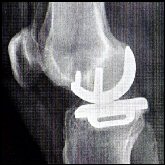 OR RISK BEING PUT OUT OF BUSINESS BY THEM
OR RISK BEING PUT OUT OF BUSINESS BY THEM
by Howard Tullman
Don’t fear the bots. They’ll free your company from unprofitable and tedious work. Yes, some jobs are going to be displaced. But the ones that are left and the new ones the bots will create will be more productive and way more interesting.
I realize that it’s a little frightening for many of us when we hear some of the intimidating statistics about headcount reductions in more and more industries that are being driven by the growing deployment of what we’re generically calling “bots.” But I don’t think bots are so bad for business. I realize that, while the major shifts are just beginning, we’re already talking about the displacement of thousands of analysts and adjusters in the insurance and finance industries as well as hundreds of highly-paid attorneys in sectors of the banking business. The sooner you figure out how to incorporate and deploy these little time- and money-savers, the better off you and your business will be. And that goes for businesses of all sizes.

Excepting some of the folks who will be replaced by these efficient and energetic little wonders, it will be a break for the better. Honest. No one in their right mind will miss any of the boring, repetitive and utterly useless tasks that are a painful part of too many of our jobs. If your tasks can be reduced to a set of instructions and rules that need to be repeatedly and flawlessly executed, we’ll soon enough find a program or a machine to do that work better, quicker and more accurately than you– and to do it 24/7 as well. No one argues with that part of the equation. We’d all love to be freed up from our chores and be doing exciting, creative and constructive work.
The rub comes in the rest of the story – the ratio and the scale of the jobs being eliminated as compared with the new jobs available to replace them. To quote Bruce Springsteen, in My Hometown, “Foreman says these jobs are going boys and they ain’t coming back.” Take a look at the hospitality business as a simple example. Airbnb is closing in on Marriott’s $42.7 billion market cap (it’s already worth about $10 billion more than Hilton), but the employee headcounts of these companies are in different universes. Marriott employs more than 225,000 people, Airbnb about 3,500– yes 3,500 employees. And I’m not just picking on Marriott. Hilton has about 170,000 team members. You can argue that some of those people are doing different and allegedly irreplaceable functions. But in the end, the real question is whether the customer/guest’s needs are being more than met. None of Marriott’s guests really cares about whatever it is that fills the day for those extra 400,000 workers. I’m not even sure that most of their managers know what makes up their day.

When you couple the substantial reductions in the workforce with the readily-demonstrated and clearly impressive gains in productivity and lower operating costs that we’re also seeing, it’s clear that there are major bumps in the road ahead and significant disruptions in the ways business has traditionally been done. This is especially true because the vast majority of these changes are neither complicated in regard to the technologies nor costly in terms of the required capital. Low-hanging fruit abounds. JP Morgan Chase reports eliminating more than 350,000 hours of legal document review time per year by employing bots and smart contracts.
When I use the term “bots,” I’m not talking about anything as challenging as truly intelligent agents or even anything autonomous. I’m talking about simple lines of code– and not that many– that can successfully execute instructions and directives or commands that are well-established and documented by humans. I hate to call any of this stuff artificial intelligence. At best it’s augmented and extended intelligence. The intelligence being extended is ours; the folks being augmented are us. We’re talking about systems and tools that will help us perform routine tasks with minimal supervision or ongoing direction, and essentially automatically, upon request. Every business still has some of these pockets of obvious inefficiency and it’s mainly ignorance of better options and inertia that keeps them from realizing immediate improvements and significant cost savings. Your business does too, and the sooner you do your own audit and analysis, the better off and more competitive you’ll be. (See Use a Mirror to Mind Your Own Business First)
There are opportunities everywhere, but the sweetest spots for almost any business seem to fall into four recurring buckets. Forget about chatbots and retweeters. Focus internally first where you can get the biggest bang for your buck and where you can ride on existing rails. The people providing support and resources in this emerging space are few and far between right now, but they tend to target these critical areas: HR, Finance, Operations and Sales. I know, you’re already saying, “well duh, that’s just about the whole business”, so trim it down to HR and Finance and start there. Eat the elephant one bite at a time.

One of the best providers is an 1871 alumni organization called Catalytic/www.catalytic.com/> whose tagline says it all: “Do more of what you love, and less of what you don’t.” They are smart enough to understand that they are in a “rinse and repeat” business so that each time they build a new process bot they create the ability to provide a version of that same solution to thousands of other businesses more efficiently, more rapidly, and less expensively. They talk about concrete client results delivered in days, not months or years.
And, to be successful, you need a plan that’s ongoing and iterative and that’s always targeting and attacking the dumbest things you are doing. In many cases, it’s an approach that follows the same basic steps: digitize and dump the paper; speed up the flow and the inter- and intra-departmental handoffs; automate as many steps in the process as possible; measure the results; and do it again. It needs to become a habit and a mantra of your business—always moving to raise the bottom and improve the average.
It’s interesting to watch the adoption cycle as well. It’s both competitive and contagious. The more you do; the more your people will want to do and, interestingly enough, you’ll have them bringing suggestions and ideas to you for next steps–forward integrations into other programs like Word and Excel, for example—instead of sitting on their hands and bitching about the bots.
The dashboards and the flow charts that you now have access to provide levels of actionable information and data that were never available before. Frankly, these are the exact tools that you need to move your business forward. Managing by exception rather than brute force is the only way to spread your scarce and costly resources around.
■

Howard Tullman is the father of Chicago’s 1871 incubator.
Read his bio on Wikipedia: https://en.wikipedia.org/wiki/Howard_A._Tullman
Check out his websites at http://tullman.com/ and http://tullman.blogspot.com/
Or just type his name into your favorite search engine.
.
This article previously appeared in Inc.
Image Credits – Getty Images, MS Office
Chicago Venture Magazine is a publication of Nathaniel Press www.ChicagoVentureMagazine.com Comments and re-posts in full or in part are welcomed and encouraged if accompanied by attribution and a web link. This is not investment advice. We do not guarantee accuracy. Please perform your own due diligence. It’s not our fault if you lose money.
.Copyright © 2017 John Jonelis – All Rights Reserved
.
.






































































































































































